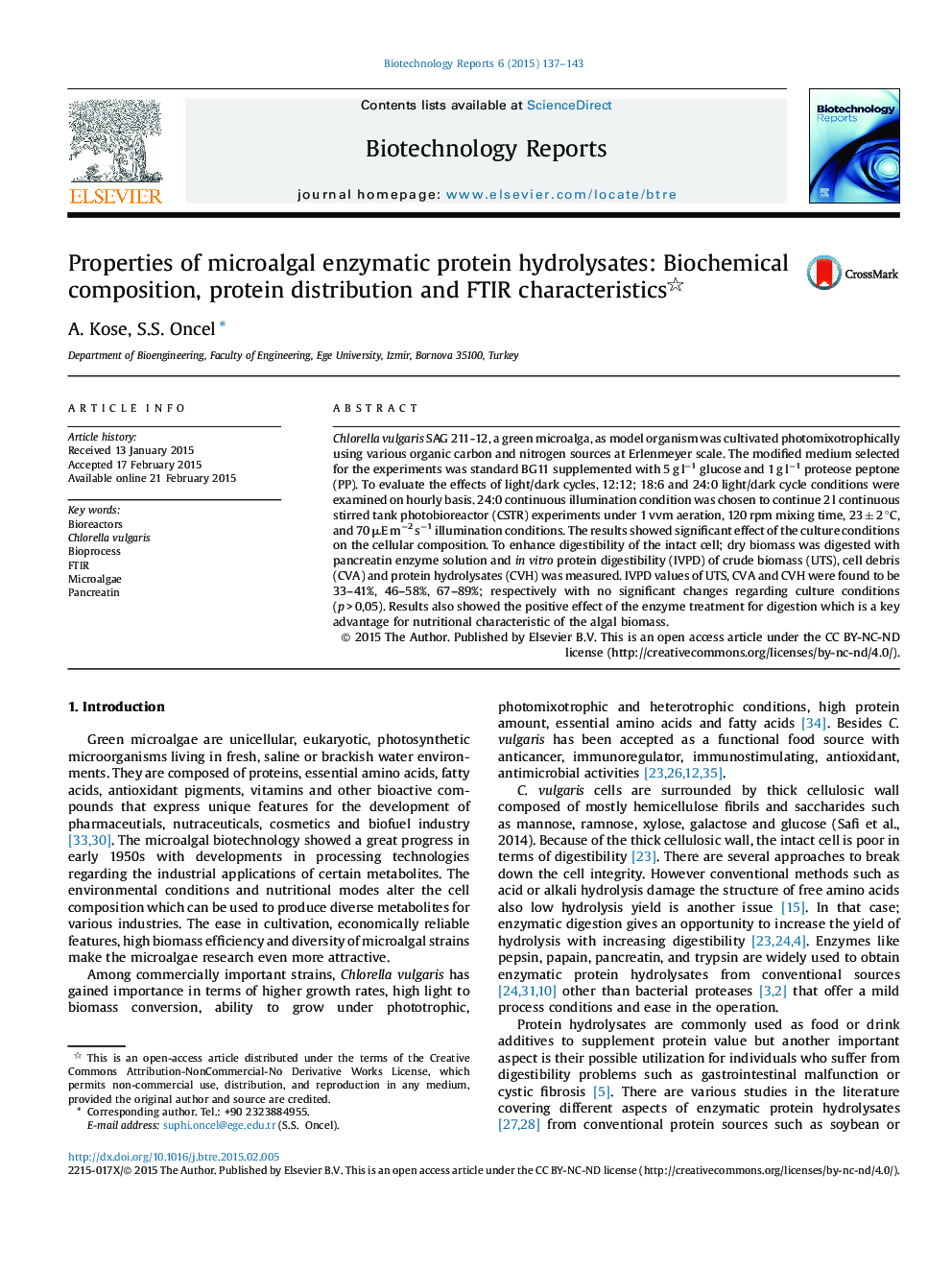| Article ID | Journal | Published Year | Pages | File Type |
|---|---|---|---|---|
| 870646 | Biotechnology Reports | 2015 | 7 Pages |
•Microalgae cultivation in photomixotrophic conditions.•Proteolytic hydrolysis of crude microalgae cells.•Dietary supplement of microalgae and functional nutrition.•Utilization of FTIR spectroscopy to determine biochemical composition.•Enhancement of in vitro protein digestibility (IVPD).
Chlorella vulgaris SAG 211-12, a green microalga, as model organism was cultivated photomixotrophically using various organic carbon and nitrogen sources at Erlenmeyer scale. The modified medium selected for the experiments was standard BG11 supplemented with 5 g l−1 glucose and 1 g l−1 proteose peptone (PP). To evaluate the effects of light/dark cycles, 12:12; 18:6 and 24:0 light/dark cycle conditions were examined on hourly basis. 24:0 continuous illumination condition was chosen to continue 2 l continuous stirred tank photobioreactor (CSTR) experiments under 1 vvm aeration, 120 rpm mixing time, 23 ± 2 °C, and 70 μE m−2 s−1 illumination conditions. The results showed significant effect of the culture conditions on the cellular composition. To enhance digestibility of the intact cell; dry biomass was digested with pancreatin enzyme solution and in vitro protein digestibility (IVPD) of crude biomass (UTS), cell debris (CVA) and protein hydrolysates (CVH) was measured. IVPD values of UTS, CVA and CVH were found to be 33–41%, 46–58%, 67–89%; respectively with no significant changes regarding culture conditions (p > 0,05). Results also showed the positive effect of the enzyme treatment for digestion which is a key advantage for nutritional characteristic of the algal biomass.
Graphical abstractFigure optionsDownload full-size imageDownload as PowerPoint slide
